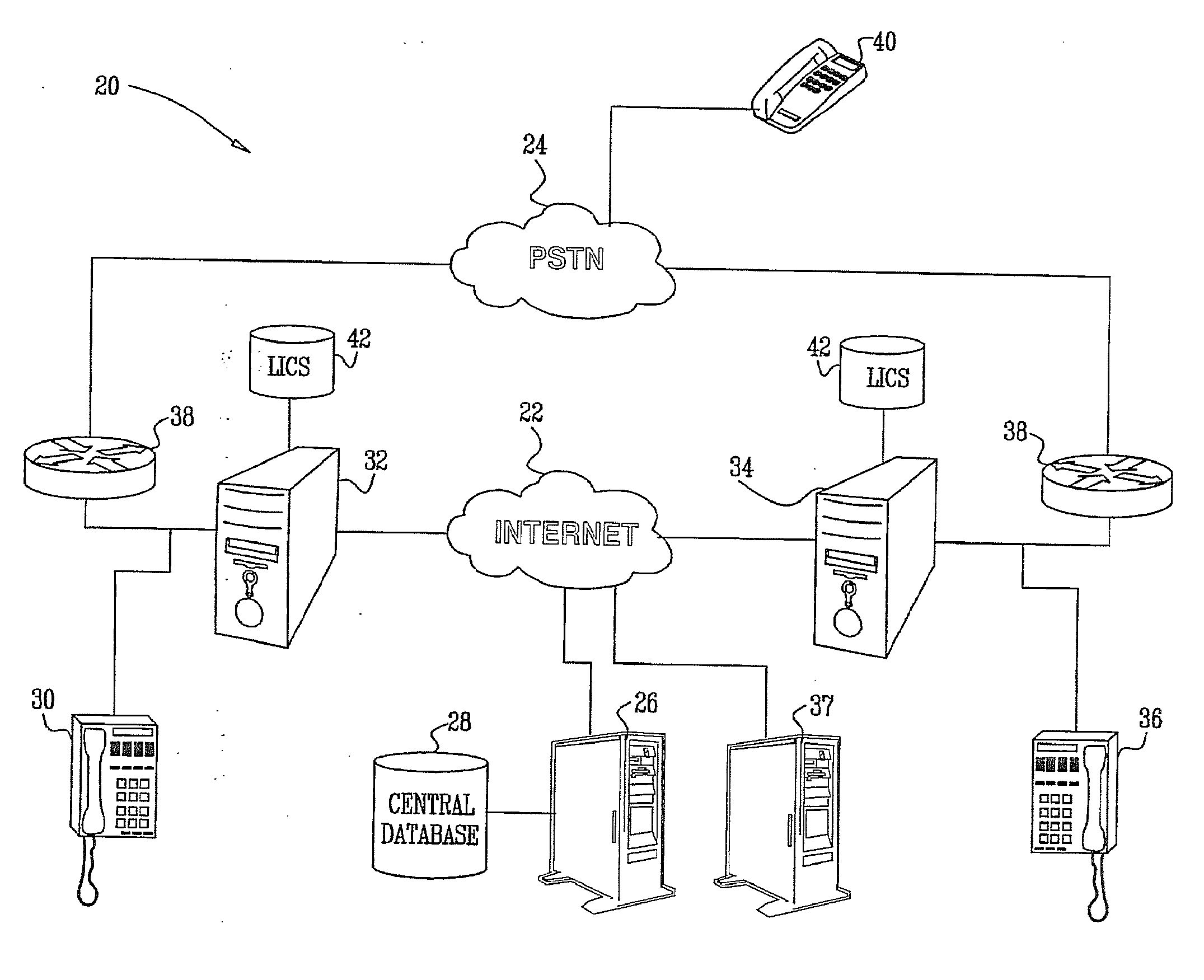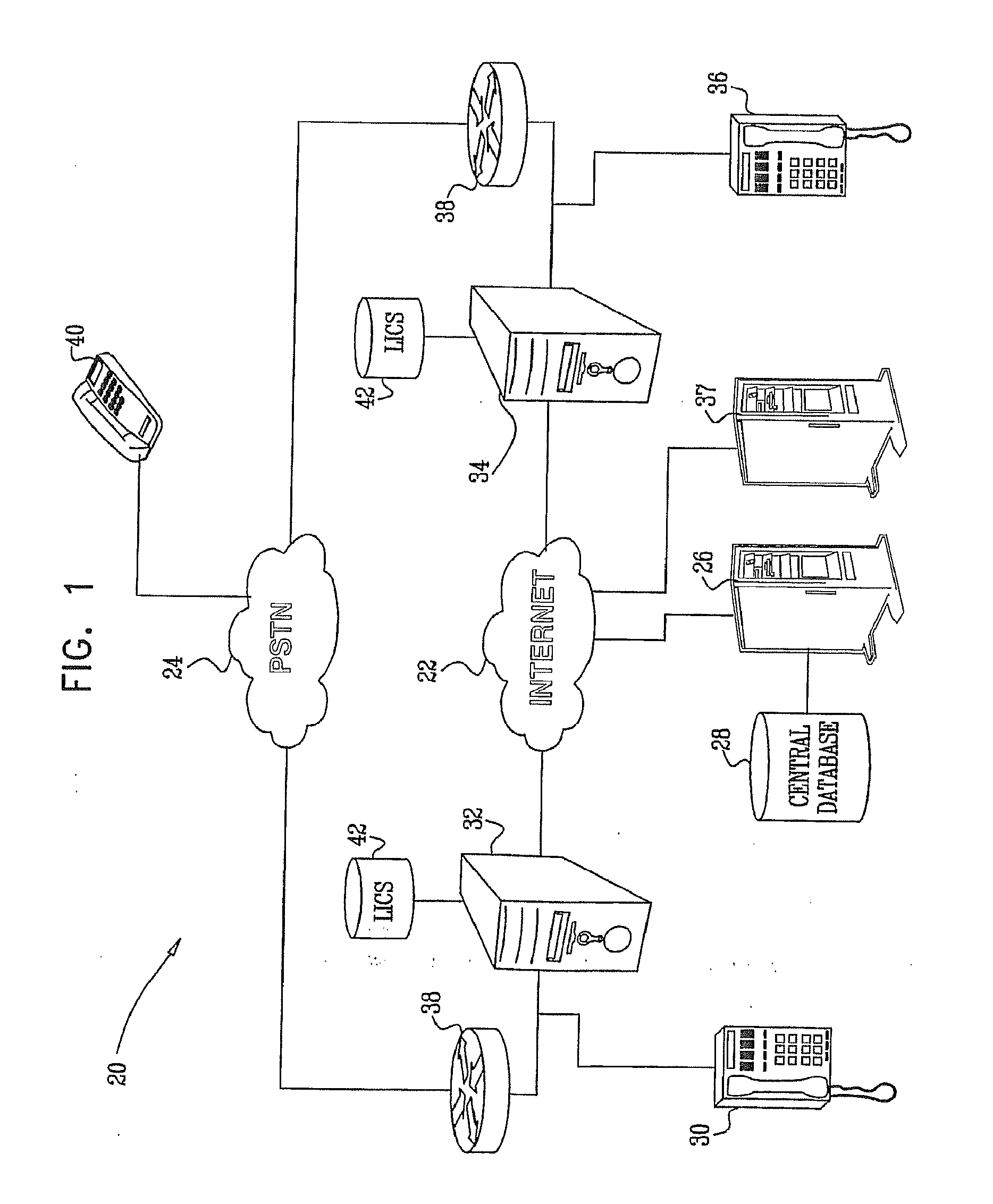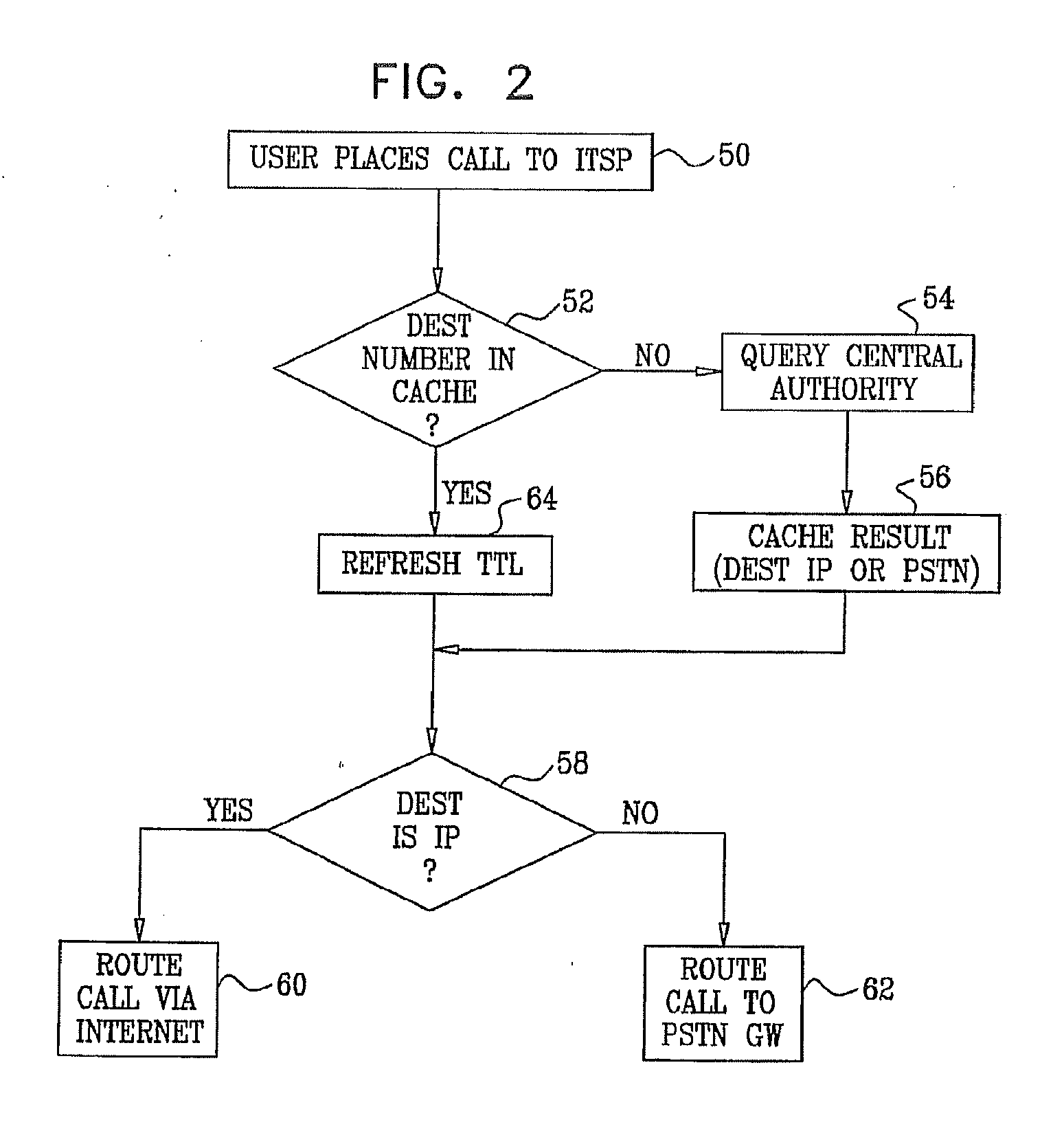Efficient address caching for packet telephony services
a packet telephony and address caching technology, applied in the field of packet telephony, can solve the problems of inability of each itsp to hold a complete copy of the database, subscribers may incur long delays before their calls are completed, and the centralized database may not be willing to release their subscriber records to non-trusted parties, so as to improve the efficiency and security of accessing records, the effect of reducing the number of cache hits
- Summary
- Abstract
- Description
- Claims
- Application Information
AI Technical Summary
Benefits of technology
Problems solved by technology
Method used
Image
Examples
Embodiment Construction
System Overview
[0042]FIG. 1 is a block diagram that schematically illustrates a system 20 for Internet-based telephony, in accordance with an embodiment of the present invention. The system permits Internet telephony users to place calls over either a packet network 22, such as the public Internet, or a PSTN 24, depending on the destination telephone number of each call. This inter-network functionality is supported by a central database 28 containing records indicating the correspondence between E.164 telephone numbers and packet network addresses, in the form of URIs that can be placed directly into a SIP message for routing. The central database is accessible via a central server 26, which is typically maintained by a trusted central authority. In the description that follows, for the sake of simplicity, it will be assumed that database 28 stores records in ENUM format and may be accessed over network 22 using DNS protocols. Alternatively, other data formats and protocols may be ...
PUM
 Login to View More
Login to View More Abstract
Description
Claims
Application Information
 Login to View More
Login to View More - R&D
- Intellectual Property
- Life Sciences
- Materials
- Tech Scout
- Unparalleled Data Quality
- Higher Quality Content
- 60% Fewer Hallucinations
Browse by: Latest US Patents, China's latest patents, Technical Efficacy Thesaurus, Application Domain, Technology Topic, Popular Technical Reports.
© 2025 PatSnap. All rights reserved.Legal|Privacy policy|Modern Slavery Act Transparency Statement|Sitemap|About US| Contact US: help@patsnap.com



